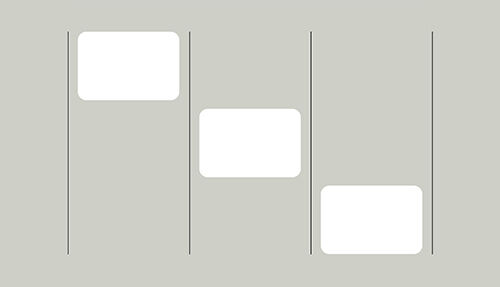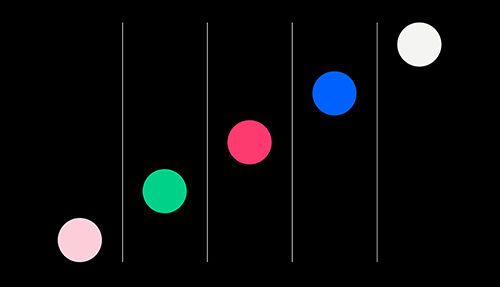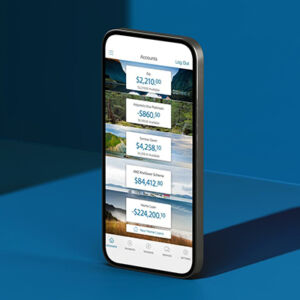Balancing aesthetics and functionality in web design

Great web design is all about creating a balance between form and function. The digital designers must take into account the user’s needs and create a visually appealing interface that is also easy to use. Your design can fall flat if you lean too much either way. A well-designed website should be able to capture the user’s attention and keep them engaged while navigating your website.
Let's take a deep dive into everything you need to know about managing the balance between aesthetics and functionality in web design. We'll look at the benefits of both, and how you can strike a winning balance between the two that culminates in a great user experience.
What is Aesthetics in Web Design?
Aesthetics in web design refers to the visual appeal of a website. This encompasses everything from the layout and colour scheme to the typography and images used.
Aesthetics are important because they play a big role in how users perceive your website. A well-designed website will look professional and trustworthy, while a poorly designed website can make you look unprofessional and untrustworthy.
It’s also worth noting that aesthetics are not just about making your website look good. They’re also about making it appealing for your specific target audience. Using aesthetics well means speaking to your audience and designing with them in mind.
The importance of aesthetics in delivering great digital experiences.
Brilliant digital experiences are rooted in great design. The reason is simple: humans are visual creatures. We process images 60,000 times faster than text, and we’re wired to respond emotionally to what we see.
Aesthetics help us understand and navigate the world around us. They guide our eyes to where we need to go and give us subtle cues about what to do next. If a website doesn't have strong aesthetics, users will have a hard time using it.
Targeting your aesthetics to your customer base is essential to delivering a great user experience. If your brand is targeted towards women in their 50s, your website should reflect that. It wouldn't make sense for your website to be filled with images of young, 20-something women, or to have masculine descriptive words like "crushing it" or "dominate!"
Your website's aesthetics should be an extension of your brand and speak to your target audience. Strong aesthetics also help build trust and credibility. If a website looks dated or unprofessional, users will be less likely to trust it with their personal information. Only a brave soul is going to put their credit card details into a website that looks like it’s from 1998. On the other hand, a well-designed, modern website is going to garner a lot more confidence with people.
What is functionality in web design?
Functionality in web design refers to how well a website works. This includes everything from the user experience to the technical aspects of the website.
Functionality is all about making sure your website works well for your specific target audience. For example, if you have a website for a school, it needs to be easy for parents to find information about their child’s progress. If you have a website for a business, it needs to be easy for customers to find your contact information and get in touch.
Why does functionality matter?
The functionality of a website is important for several reasons. First, from a business perspective, a website that is difficult to use or navigate is likely to drive potential customers away. In addition, any e-commerce site needs to be easy to use to complete transactions. If a website doesn’t work properly or people get lost looking through it, then you won’t find success in converting leads.
In saying this, a website that is overly functionality-oriented may end up being boring. Take a look at any old-school Craigslist page and you'll see what we mean. There needs to be a balance between the two in order to create an effective website.
Functionality is also important for search engine optimization (SEO). Websites that are well-designed and easy to use are more likely to be ranked higher by search engines. This is because search engines want to deliver the best possible results to their users, and they know that people are more likely to use websites that are easy to navigate.
The balance - the optimal mix of aesthetics and function.
We've explored how too much of either art or function is detrimental to your website. But how do you reap the benefits of both without going overboard in either direction? How do you find the perfect balance?
The optimal website is one that is both aesthetically pleasing and easy to use. The design should be visually appealing and reflect the brand, while the user experience should be intuitive and easy to navigate. In simple terms - your users should be able to find what they're looking for without any difficulty, and they should enjoy doing so.
This can be a challenge to achieve, but it's worth it, and user testing can play a massive role in uncovering issues which can lead to better user experience. A website that can strike the perfect balance of form and function will be far more enjoyable and engaging for your audience.
Achieving balance between functionality and design.
There are a few ways to strike a balance between functionality and aesthetics in web design. One way is to focus on making the website easy to use. This can be done by making sure the navigation is intuitive to understand, and by providing clear and concise information. At the same time, you can make sure the website looks good by choosing an attractive colour scheme and using high-quality images.
Another way to achieve balance is to focus on delivering a great user experience. This means thinking about what your users want and need from your website and then designing the website accordingly. User testing is a great way to find minor issues that otherwise may have slipped by your developers and clients.
You can also use web design trends to your advantage. By keeping up with the latest movements, you can make sure your website looks modern and stylish. At the same time, you can use trends to make your website more user-friendly. For example, responsive design is a trend that is both aesthetically pleasing and functional, as it ensures that your website looks great on all devices and is easy to use on mobile devices or tablets. Instagram is great example of responsive design with its simple grid layout. This design translates well on all devices and allows users to easily find the content they’re looking for.
You can manipulate different design elements, including colour, layout, and typography, to create a better balance of function and aesthetics. Interactive elements, including buttons, pop-ups, and videos, can also be used to add both function and style to your website. By using these elements, you can make your website more engaging and interactive, while still making sure it is seamless to use.
Functionality and aesthetics are both important in web design. A balance of the two is necessary in order to create a successful website. There are a few ways to achieve this balance, including focusing on making the website easy to use and delivering a great user experience for your audience to enjoy.







